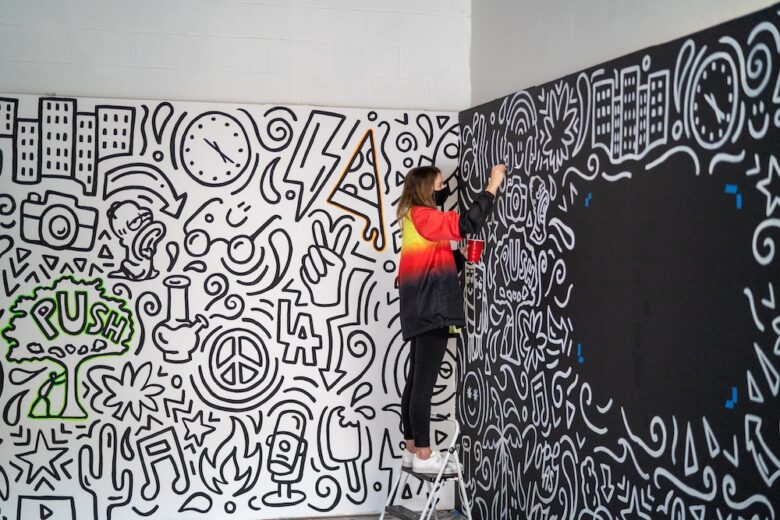Is artificial intelligence good or bad for traditional artists?
Artificial intelligence (AI) is transforming the way we create and experience art. In this article we explore whether it is good or bad for traditional artists.
With the ability to analyze vast amounts of data and generate complex algorithms, AI is pushing the boundaries of what is possible in the world of art. AI-generated art is not only revolutionizing the creative process, but also raising important questions around the future of the industry.
Art is expanding the creative potential for artists
AI art can serve as a valuable source of inspiration for artists, providing them with a new perspective on creative techniques and ideas to explore. By studying and learning from AI-generated art, artists can expand their skill set and gain new insights into their craft. They can use this knowledge to push the boundaries of their work and develop their own unique style.
Additionally, AI art can inspire artists to experiment with new mediums, tools, and technologies that they may not have considered before. The potential for AI art to inspire creativity and innovation in traditional art forms makes it an exciting area for artists to explore and incorporate into their own work.
The potential impact of AI art on traditional art forms
While AI art can offer a new level of sophistication and creative potential, the impact of ai art for artists can also pose a threat to traditional art forms and the livelihoods of artists. As AI-generated art continues to evolve, it has the potential to compete with traditional art forms in terms of quality, accessibility, and cost.
This could lead to a shift in consumer demand and potentially impact the sales and recognition of traditional art forms. Additionally, the rise of AI art could make it more difficult for artists who specialize in traditional mediums to find work and establish themselves in the industry.
As AI art continues to grow in popularity and sophistication through the use of tools like an AI image generator, it will be important for artists to adapt and find new ways to innovate and stand out in a changing landscape.
Artificial intelligence in the creative process
Some artists are embracing the potential of AI as a creative partner, using algorithms to generate ideas, images, and even entire artworks. By collaborating with AI, artists can explore new creative directions and push the boundaries of what is possible in their work. This can lead to innovative new forms of art that are impossible to create using traditional methods alone.
Additionally, the use of AI in art can help artists to overcome creative blocks and generate new ideas that they may not have considered before. However, collaboration with AI also raises questions around authorship and creative ownership. While the role of AI in art is still evolving, it is clear that it has the potential to change the way we think about creativity and the creative process.
Art is more accessible and inclusive for all audiences
One of the potential benefits of AI art is its ability to make art more accessible to a wider audience. With the rise of digital platforms, AI-generated art can be easily shared and disseminated, allowing more people to experience and appreciate it. This can help to democratize the art world and provide new opportunities for emerging artists to showcase their work.
The accessibility of AI art can also help to break down barriers to entry for people who may not have had access to traditional art education or training. With the proliferation of AI-generated art on social media and other digital platforms, people from all backgrounds can engage with and explore this new form of art.
This can lead to a greater appreciation of art and creativity across a wider range of audiences, helping to bridge gaps and promote greater understanding and cultural exchange.
Authorship, ownership, and responsible use
As AI-generated art becomes more advanced, ethical concerns are emerging around authorship, ownership, and the role of AI in the creative process. One of the key issues is around who owns the copyright of AI-generated artworks. While the algorithms and data used to create the artwork may be the property of the creator or organization that developed them, it is unclear who owns the rights to the final output.
In addition to this, there are concerns around the potential for AI art to perpetuate bias and discrimination if the underlying algorithms are not properly vetted and controlled. There is also a risk that AI-generated art could be used to manipulate public opinion or perpetrate fraud.
As the field of AI art continues to evolve, it will be important to address these ethical concerns and establish clear guidelines around authorship, ownership, and responsible use of AI in the creative process. This will help to ensure that AI art is developed in a way that is ethical, transparent, and promotes the greater good.
AI art is a rapidly evolving field
In conclusion, AI art is a rapidly evolving field that is transforming the way we create and experience art. While it offers exciting new possibilities for innovation and accessibility, it also poses challenges for traditional art forms and raises ethical questions around authorship and responsible use.
As AI-generated art continues to evolve, it is important for artists and the art world as a whole to embrace the potential of AI while also being mindful of its potential impact.




